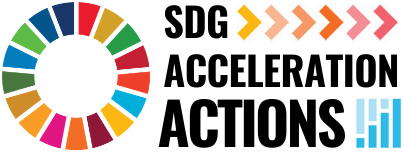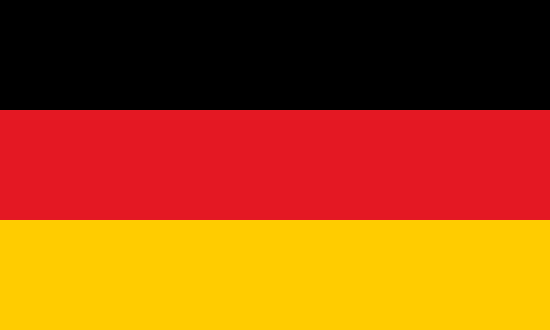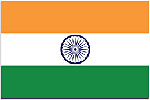50:50 The Equality Project
(
Other relevant actor
)
#SDGAction43533
Description
The Project began as a grassroots initiative in the BBC’s London newsroom in 2017. It now involves 670 BBC teams and more than 100 partner organisations in 26 countries – all working towards one goal: equal representation of women and men in content.
In 2021, for the first time, the BBC’s progress was published alongside our 50:50 partner organisations.
In March, teams were challenged to see how many could reach 50% women contributors. Within the BBC, the challenge included how many could consistently meet 50:50 from October 2020 to March 2021.
In a year that saw the coronavirus pandemic have a devastating impact on lives and industries globally, the data suggested that achieving gender balance remained a priority for the global 50:50 network.
At the BBC, 70% of datasets featured 50% women contributors in March, compared to 36% when they first started. Forty percent also proved consistency.
Across the global 50:50 network, 41 organisations took part in the challenge. Half of the datasets submitted featured at least 50% women. All are committed to continue improving women’s representation in their output.
In October 2020, the BBC announced 50:50 monitoring was expanding to include representation of ethnicity and disability. This supports the Corporation’s aim to reach 50% women, 20% black, Asian and minority ethnic, and 12% disabled representation on-screen, on-air and in lead roles across all genres.
Over 220 teams across the BBC have now committed to using 50:50 monitoring to increase their representation of ethnic minority and disabled contributors.
This progress demonstrates a worldwide commitment to improving representation in content. It evidences how 50:50 is contributing to sustained culture change across the creative industries and beyond.
Over the long-term, the expected impact of 50:50 is equal representation of women on media content that is permanent. Organisations that take part in 50:50 will see their content begin to reflect the world we live in. Using the BBC as the example, a survey conducted by YouGov of 2,200 people who use any BBC online service found that 62% had noticed a shift towards more women in content than two years ago. In addition, 58% of women aged 16 to 34 say they now consume more BBC online content because of greater female representation. These statistics are important, as research from the Geena Davis Institute show that the more media represents women better the more likely women will consume that content. This is replicated for any under-served audience. If the media are not able to attract these audiences then important and vital information cannot be provided. It is something that the BBC and fellow public service broadcasters are acutely aware of with the ongoing coronavirus crisis. Therefore, ensuring media content is representative of society is crucial. It is not only crucial for public information purposes but also for creating a world of equality. As American children’s rights campaigner Marian Wright Edelman said: ‘You can’t be what you can’t see.’ An example of this was the Women’s Football World Cup in 2019. Its coverage saw a surge in the number of girls wanting to play football. Role-models are crucial when it comes to inspiring young people and it is the media that shows the next generation what they can be. Therefore, it is vital the media knows whether it is actually doing this. 50:50 provides that data which can help inform the media on how it can adapt and change to reflect society better. The media now holding itself to account through 50:50 has inspired others to do the same, including global players such as Unilever and PwC joining as partners. The more organisations that come board with 50:50 the more likely media content is to represent the world. The impact of that will be that everyone will be have access to the information and inspiration they need.
SDGS & Targets
Goal 10
Reduce inequality within and among countries
10.1
By 2030, progressively achieve and sustain income growth of the bottom 40 per cent of the population at a rate higher than the national average
10.1.1
Growth rates of household expenditure or income per capita among the bottom 40 per cent of the population and the total population
10.2
By 2030, empower and promote the social, economic and political inclusion of all, irrespective of age, sex, disability, race, ethnicity, origin, religion or economic or other status
10.2.1
Proportion of people living below 50 per cent of median income, by sex, age and persons with disabilities
10.3
Ensure equal opportunity and reduce inequalities of outcome, including by eliminating discriminatory laws, policies and practices and promoting appropriate legislation, policies and action in this regard
10.3.1
Proportion of population reporting having personally felt discriminated against or harassed within the previous 12 months on the basis of a ground of discrimination prohibited under international human rights law
10.4
Adopt policies, especially fiscal, wage and social protection policies, and progressively achieve greater equality
10.4.1
Labour share of GDP
10.4.2
Redistributive impact of fiscal policy on the Gini index
10.5
Improve the regulation and monitoring of global financial markets and institutions and strengthen the implementation of such regulations
10.5.1
Financial Soundness Indicators
10.6
10.6.1
Proportion of members and voting rights of developing countries in international organizations
10.7
Facilitate orderly, safe, regular and responsible migration and mobility of people, including through the implementation of planned and well-managed migration policies
10.7.1
Recruitment cost borne by employee as a proportion of montlhy income earned in country of destination
10.7.2
Number of countries with migration policies that facilitate orderly, safe, regular and responsible migration and mobility of people
10.7.3
Number of people who died or disappeared in the process of migration towards an international destination
10.7.4
Proportion of the population who are refugees, by country of origin
10.a
10.a.1
Proportion of tariff lines applied to imports from least developed countries and developing countries with zero-tariff
10.b
10.b.1
Total resource flows for development (e.g. official development assistance, foreign direct investment and other flows)
10.c
By 2030, reduce to less than 3 per cent the transaction costs of migrant remittances and eliminate remittance corridors with costs higher than 5 per cent
10.c.1
Remittance costs as a proportion of the amount remitted
Goal 5
Achieve gender equality and empower all women and girls
5.1
End all forms of discrimination against all women and girls everywhere
5.1.1
Whether or not legal frameworks are in place to promote, enforce and monitor equality and non‑discrimination on the basis of sex
5.2
5.2.1
Proportion of ever-partnered women and girls aged 15 years and older subjected to physical, sexual or psychological violence by a current or former intimate partner in the previous 12 months, by form of violence and by age
5.2.2
Proportion of women and girls aged 15 years and older subjected to sexual violence by persons other than an intimate partner in the previous 12 months, by age and place of occurrence
5.3
5.3.1
Proportion of women aged 20-24 years who were married or in a union before age 15 and before age 18
5.3.2
Proportion of girls and women aged 15-49 years who have undergone female genital mutilation/cutting, by age
5.4
Recognize and value unpaid care and domestic work through the provision of public services, infrastructure and social protection policies and the promotion of shared responsibility within the household and the family as nationally appropriate
5.4.1
Proportion of time spent on unpaid domestic and care work, by sex, age and location
5.5
Ensure women’s full and effective participation and equal opportunities for leadership at all levels of decision-making in political, economic and public life
5.5.1
Proportion of seats held by women in (a) national parliaments and (b) local governments
5.5.2
Proportion of women in managerial positions
5.6
Ensure universal access to sexual and reproductive health and reproductive rights as agreed in accordance with the Programme of Action of the International Conference on Population and Development and the Beijing Platform for Action and the outcome documents of their review conferences
5.6.1
Proportion of women aged 15-49 years who make their own informed decisions regarding sexual relations, contraceptive use and reproductive health care
5.6.2
Number of countries with laws and regulations that guarantee full and equal access to women and men aged 15 years and older to sexual and reproductive health care, information and education
5.a
Undertake reforms to give women equal rights to economic resources, as well as access to ownership and control over land and other forms of property, financial services, inheritance and natural resources, in accordance with national laws
5.a.1
(a) Proportion of total agricultural population with ownership or secure rights over agricultural land, by sex; and (b) share of women among owners or rights-bearers of agricultural land, by type of tenure
5.a.2
Proportion of countries where the legal framework (including customary law) guarantees women’s equal rights to land ownership and/or control
5.b
5.b.1
Proportion of individuals who own a mobile telephone, by sex
5.c
Adopt and strengthen sound policies and enforceable legislation for the promotion of gender equality and the empowerment of all women and girls at all levels
5.c.1
Proportion of countries with systems to track and make public allocations for gender equality and women’s empowerment
SDG 14 targets covered
| Name | Description |
|---|
Deliverables & Timeline
50:50 in public broadcasters globally: We are working with public service broadcasters around the world to deliver diverse content for the countries and audiences we serve.
50:50 in journalism schools around the world: We are creating a global 50:50 academic network to inspire the next generation of journalists.
50:50 in the world’s leading companies: The world’s most high-profile businesses are significant content creators and media contributors. We are working with them to inspire a shift in how the business sector is reflected in the media.
Use 50:50 to inspire better representation of our diverse societies: From ethnicity to disability to socio-economic diversity, we will work with our global partners to use 50:50 to improve the portrayal of under-represented groups across the media.
Resources mobilized
Partnership Progress
| Title | Progress Status | Submitted |
|---|---|---|
| 50:50 The Equality Project - Tue, 07/19/2022 - 13:12 | On track | |
| Partnership Progress 2021-05-03 | On track | |
| Partnership Progress 2021-05-03 | On track | |
| Partnership Progress 2020-05-07 | On track | |
| Partnership Progress 2020-05-07 | On track |
Feedback
Action Network

Timeline
Entity
Region
- Africa
- Asia and Pacific
- Europe
- Global
- Latin America and the Caribbean
- North America
- West Asia
Geographical coverage
Other beneficiaries
More information
Countries




















